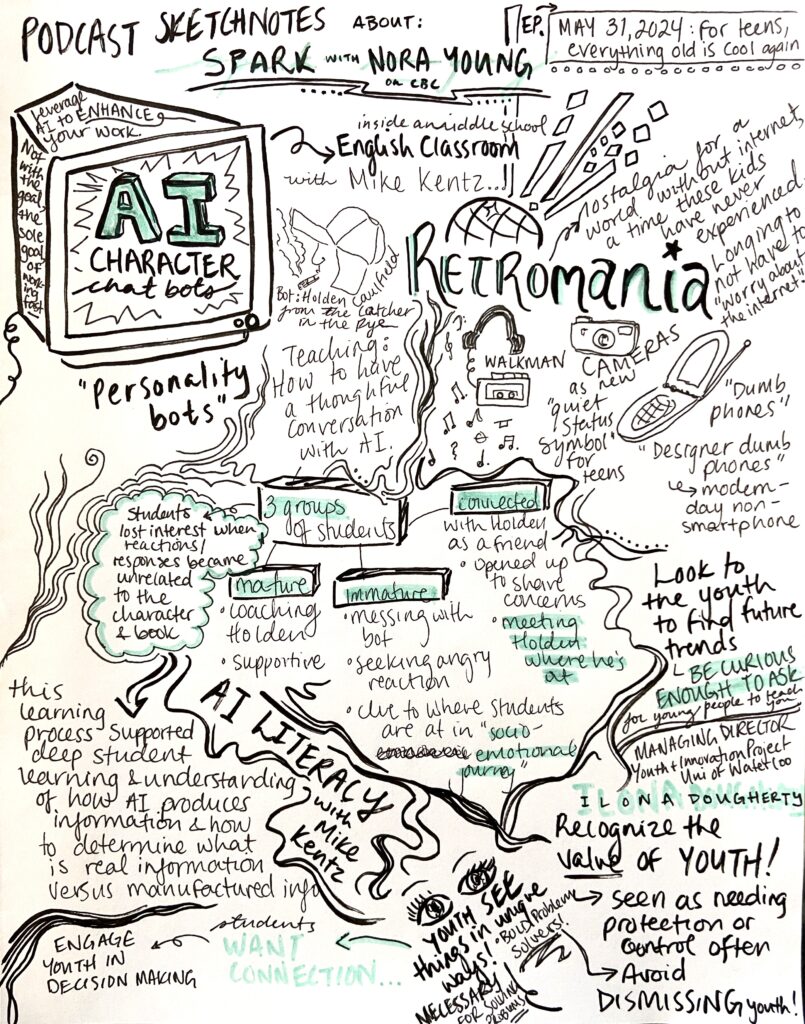Enhancing student learning through teaching AI literacy skills
When listening to a recent podcast episode of Spark with Nora Young on CBC (For teens, everything old is cool again; May 31, 2024), I couldn’t help but reflect on what I was hearing about the importance of teaching AI literacy. Mike Kentz’ middle school English classroom caught my attention. As a part of a unit on The Catcher in the Rye, the students engaged with an AI character chatbot who was based on the main character from the book—Holden Caulfield. Kentz goal was to teach students how to have a thoughtful conversation with AI, and ultimately gain AI literacy skills.

These are the sketchnotes I took while listening to the podcast.
This chatbot AI exercise is an instance of AI supporting the learning process. When the chatbot started responding in ways that were unrelated to the book, the students lost interest. This was partly because students learned how to distinguish what information was factual and what was pieced together for the sake of the bot providing a response.
This, however, is not the only way students are using AI in the classrooms. Some are interacting in ways that does not support learning or whose main intention is to do more work in a shorter amount of time. It is important for educators to discourage this type of use and encourage use of AI to enhance work instead. This will help students learn thoughtful engagement with AI. Ways that work can be supported through thoughtful use of AI in a middle school classroom include:
- Always teaching students how to cite AI use
- Using ChatGPT to brainstorm ways to connect two topics of interest for a compare-and-contrast essay
- Tactful use of AI character chatbots (like in the example above)
- Full-group analysis of a conversation with ChatGPT to identify the biases in the responses
- Teaching how to fact-check your responses
- Individual student engagement with AI for help structuring an essay or document
While there are questions about the ethics of using GenAI, it is important in a changing world to help students feel prepared to engage with it in supportive ways, so they know how to do so when they likely come across it later in their lives. It is an understandable concern of educators that students will use GenAI without permission. Learning students’ voices through hand-written activities early in the year can help educators identify clues to tell them when a student is using GenAI on a digital assignment.
Establishing a foundational understanding of responsible AI use—alongside guided reflection practices—will empower students to benefit from AI while they are able to maintain academic integrity and personal authenticity that will lead to more profound learning. Learning will be most profound though if screen time is balanced with as much outdoor and non-screen learning as possible to support the brain development of students.